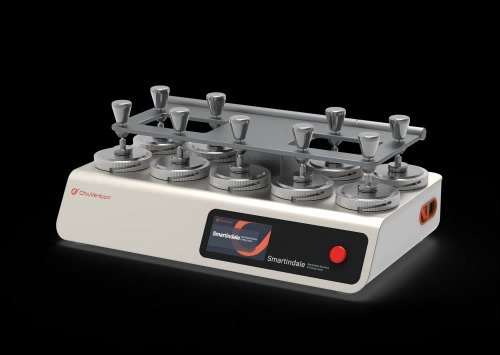Introduction
When it comes to evaluating the durability and quality of textiles, the Martindale pilling standards serve as a globally recognized benchmark. The pilling Martindale test is a crucial method for assessing a fabric’s resistance to abrasion and pilling—a common issue where small fiber balls form on the surface of fabrics due to friction.
This article explores the Martindale pilling standards, their significance in textile testing, how the test is conducted, and their impact on various industries. By the end, you’ll have a clear understanding of why this standard is essential for manufacturers, retailers, and consumers alike.
What Are Martindale Pilling Standards?
The Martindale pilling standards refer to a set of testing protocols developed to measure a fabric’s ability to withstand abrasion and pilling. The test uses the Martindale abrasion and pilling tester, a specialized machine that simulates real-world wear and tear by rubbing fabric samples against a standard abrasive surface in a controlled manner.
The results are then compared against established pilling Martindale scales, which classify fabrics based on their performance. These standards are widely used in industries such as upholstery, apparel, and automotive textiles to ensure product longevity and quality.
Why Are Martindale Pilling Tests Important?
Pilling can significantly affect a fabric’s appearance and comfort. The Martindale pilling standards help manufacturers:
Ensure Durability – Fabrics that perform well in Martindale tests are less likely to pill, ensuring longer-lasting products.
Maintain Aesthetic Quality – Pilling makes fabrics look worn out; high Martindale ratings indicate better resistance.
Meet Industry Regulations – Many industries require textiles to pass specific Martindale thresholds for certification.
Improve Consumer Satisfaction – Customers prefer fabrics that retain their look and feel over time.
Without standardized testing like the pilling Martindale method, manufacturers would struggle to guarantee consistent quality.
How the Martindale Pilling Test Works
The Martindale pilling test follows a precise procedure to ensure accurate and repeatable results:
1. Sample Preparation
Fabric samples are cut into circular specimens.
These are mounted onto the Martindale tester alongside an abrasive fabric (usually wool or wire mesh).
2. Testing Process
The machine rubs the fabric in a Lissajous (figure-eight) motion under controlled pressure.
The test runs for thousands of cycles, depending on the intended use of the fabric (e.g., upholstery requires higher cycles than apparel).
3. Evaluation & Grading
After testing, the fabric is assessed using standardized Martindale pilling standards, typically on a scale from 1 to 5:
Grade 1 (Severe Pilling) – Heavy fuzz and pills covering the surface.
Grade 2 (Moderate Pilling) – Noticeable pilling but less severe.
Grade 3 (Slight Pilling) – Some fuzz formation but minimal pills.
Grade 4 (Minimal Pilling) – Very slight surface change.
Grade 5 (No Pilling) – No visible change; excellent resistance.
Higher grades indicate better performance, with Grade 4 and 5 fabrics being ideal for high-use applications like furniture and workwear.
Industries That Rely on Martindale Pilling Standards
The pilling Martindale test is critical across multiple sectors:
1. Upholstery & Furniture
Fabrics used in sofas, chairs, and office furniture must endure constant friction.
The Martindale pilling standards help determine suitability for residential vs. commercial use.
2. Apparel & Fashion
High-end clothing brands use Martindale tests to ensure garments resist pilling after washing and wearing.
Wool, cotton, and synthetic blends are commonly tested.
3. Automotive Textiles
Car seats and interiors undergo rigorous abrasion; Martindale testing ensures longevity.
4. Technical & Industrial Textiles
Workwear, military uniforms, and medical fabrics must maintain integrity under stress.
How to Interpret Martindale Pilling Ratings
Different applications require varying levels of abrasion resistance:
| Martindale Rating (Cycles) | Suitability |
|---|---|
| 10,000 – 15,000 | Light domestic use (decorative cushions) |
| 15,000 – 25,000 | General household furniture |
| 25,000 – 40,000 | Heavy-duty domestic/light commercial |
| 40,000+ | High-traffic commercial (hotels, offices) |
A higher Martindale pilling score means the fabric can withstand more wear before showing signs of pilling.
Common Misconceptions About Martindale Pilling Tests
“More Cycles Always Mean Better Quality” – While higher Martindale ratings indicate durability, excessively tough fabrics may sacrifice softness.
“All Fabrics Can Be Tested the Same Way” – Different materials (wool vs. synthetics) require adjusted testing parameters.
“Pilling Tests Predict All Wear Issues” – Martindale tests focus on abrasion resistance but don’t account for UV or chemical damage.
Understanding these nuances ensures better decision-making when selecting textiles.
Improving Fabric Performance in Martindale Tests
Manufacturers use several techniques to enhance pilling Martindale results:
Tight Weaves & Blends – Fabrics with tightly woven fibers resist pilling better.
Anti-Pilling Finishes – Chemical treatments can reduce fiber breakage.
High-Quality Yarns – Longer, stronger fibers are less prone to forming pills.
Conclusion
The Martindale pilling standards play a vital role in textile quality assurance, helping manufacturers produce durable, high-performance fabrics. Whether for furniture, clothing, or automotive interiors, the pilling Martindale test ensures that textiles meet the demands of everyday use.
By understanding these standards, businesses can make informed choices, and consumers can select products that offer long-lasting value. As textile technology advances, the Martindale pilling test remains a cornerstone of fabric durability assessment.
Would you like more details on specific fabric types or industry applications? Let us know in the comments!
For more information on textile testing methods/standards
or textile testing machines, contact us:
What’s App: +86 180 2511 4082
Tel: +86 769 2329 4842
Fax: +86 769 2329 4860
Email: sales@tes.hk

